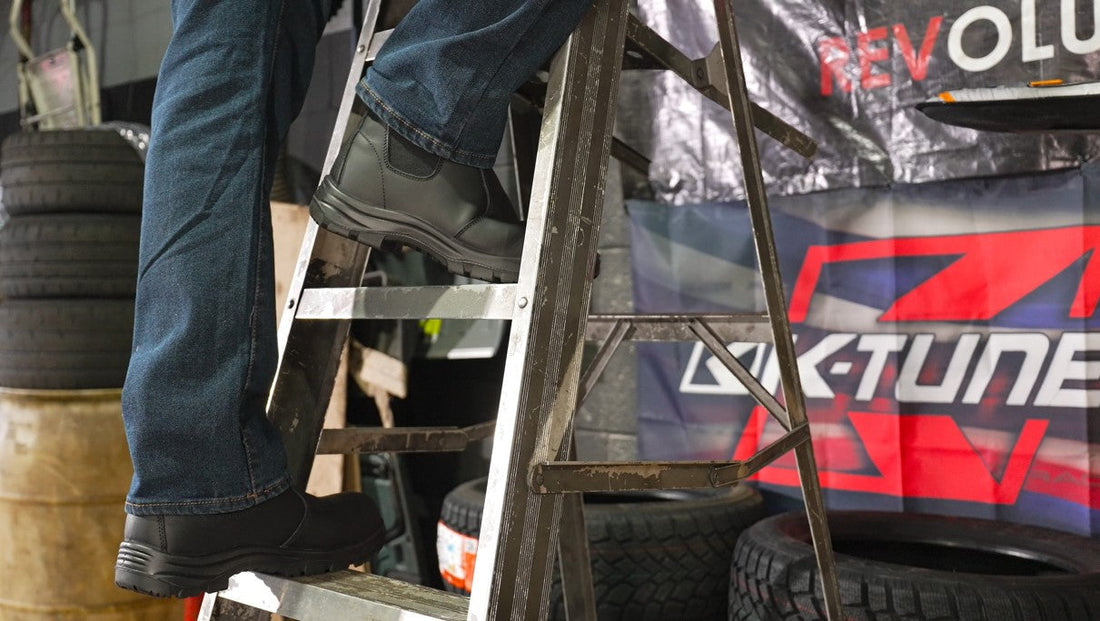Buying new work boots is exciting until the first day you wear them. Blisters, stiffness, and sore feet can quickly take the joy out of fresh safety shoes. The good news? You don’t have to suffer through a painful break-in period. With the right tips and a bit of patience, you can soften up your boots and get them jobsite-ready in just a few days.
Whether you're starting a new job, upgrading your gear, or replacing worn-out footwear, here’s how to break in your safety shoes and work boots the right way.
Why Do Work Boots Feel Stiff at First?
Safety footwear is built tough for a reason. Features like composite toe caps, reinforced soles, and thick leather uppers are designed to protect your feet, not to feel like sneakers right out of the box.
Common break-in complaints include:
- Rubbing at the heel or ankle
- Pressure around the toe box
- Limited flexibility
- General discomfort during long wear
These are totally normal during the first few wears. The trick is helping the boots mold to your feet without rushing the process.
1. Start Slow: Wear Them Around the House
Begin by wearing your new work boots indoors for short periods. This allows your feet to adjust to the shape and structure of the boots without the added pressure of a full shift. Try 30 to 60 minutes a day for the first few days.
If they’re really stiff, double up on socks or wear thick wool socks to add cushioning and prevent blisters.

2. Use a Leather Conditioner (If Applicable)
For leather work boots, applying a leather conditioner can help soften the upper material. This makes the boot more flexible and accelerates the break-in process. Look for conditioners made for oil-tanned or full-grain leather, depending on your boot.
Avoid soaking the boot as just a light application and massage will do.
3. Bend and Flex Your Boots
Manually flexing your boots before wear can make a big difference. Hold the boot at each end and gently bend it back and forth, especially at the ball of the foot. This helps loosen up stiff midsoles and speeds up the natural breaking-in process.
Pro tip: Stuff your boots with socks overnight to help maintain a comfortable shape.
4. Wear the Right Socks
Wearing high-quality work socks can make a huge difference in comfort. Look for:
- Cushioned soles
- Moisture-wicking fabric
- Compression around the arch and ankle
These help reduce friction and improve support during the break-in phase.
5. Swap the Insoles If Needed
Most safety shoes and work boots come with basic insoles. If your boots feel uncomfortable, try replacing the factory insole with a high-quality aftermarket one for that extra arch support.
6. Gradually Increase Wear Time
Once the boots start to feel a bit more flexible, begin wearing them outside for short periods. By just doing your daily errands, walking the dog, light tasks, gradually increasing the duration each day, you will be able to comfortably wear them for a full work shift in no time.

7. Don’t Ignore Hot Spots
If you feel a hot spot (a spot that starts to hurt), don’t push through. Take the boots off and treat the area with moleskin or blister pads before it gets worse. It’s better to go slow than end up sidelined by blisters.
Bonus Tips: Speed Up the Break-In Process (Without Damaging Your Boots)
- Use a boot stretcher: Great for relieving pressure in tight areas like the toe box.
- Try a hairdryer trick (carefully!): Warm up the leather slightly with a hairdryer while wearing the boots to help mold the material to your foot. Don’t overheat it or use on synthetic materials.
- Soften the collar: Rub a little petroleum jelly or boot balm on areas that dig into your ankle.
Final Thoughts
It's not necessary to endure weeks of discomfort when breaking in new work boots or safety shoes. You can ensure that your shoes fit perfectly and prevent blisters and regret by taking the proper steps.
If you’re looking for safety footwear that’s designed to break in faster without sacrificing protection, check out our MooseLog CSA/ASTM Dual Certified Boots. Built for job sites across Canada and trusted by pros, they’re ready for whatever your shift throws at you.










